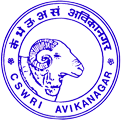|
|
|
|
|
 |
|
 |
|
Division of Textile Manufacture and Textile Chemistry
The Division of Textile Manufacture and Textile Chemistry has been the part of the institute since its inception in 1962. The mandate of the Division is to carry out basic and applied research on various aspects of wool and all other animal fibres. The main thrust area of research are fibre characterization and evaluation, grading of wool, scouring, woolen spinning, worsted spinning, weaving, chemical and mechanical finishing, product development etc. Under UNDP, a full pledged wool processing plant was commissioned at the Division for processing of wool. The plant was operational during the year 1968 with the set of woolen spinning and wet processing machineries. A boiler was also installed to carry out the chemical processing work. The weaving machineries were operational during the year 1969-70. The worsted spinning machines and finishing ranges were installed during 1970-1971. The Division has complete set of machineries from scouring to finishing of woolen goods. A testing lab was also established to carry out all kind of testing related to wool and animal fibres. At present, the Division has full set of machineries for processing any type of wool and animal fibres. The Division has significantly contributed in the product development like blanket, carpet, shawl, namdha and technical felt out of indigenous wool. It is also producing saleable products out of wool.
Projects undergoing at present
- A value chain on quality production and utilization of Pashmina fiber (NAIP )
- Development of upgraded utilization techniques for wool produced in southern peninsular region of the country (CWDB)
- Improvement of wool utilization through indigenous wool products developed by local artisans (TOT project )
Major projects completed during past:
- Manufacturing trials on graded wools (1971-74)
- Evaluation of Indian crossbred wools (1976-80)
- Evaluation, processing and utilization of wools and their blends (1980-85)
- Mechanical processing of wool, specialty hair and their blends on woollen and worsted systems (1985-90)
- Mechanical processing of wool specialty hair- their blends (1985-89).
- Survey, Sampling & Evaluation of commercial wools (1988-1992).
- Survey, sampling & evaluation of commercial carpet yarn (1993-96).
- Extraction and application of vegetable colour on wool (1991-95).
- Processing and product development out of wool & specialty hair fibres. (1996-2005)
- Processing of different hair wool for value added products (2001-2004)
- Assessment of harvest and post harvest losses (Wool) (2001-2004)
- Dyeing of wool–cotton blend with reactive dye (2001-2002)
- Development of post harvest technology for value added products utilizing Indian wool and specialty hair fibers (2005-2008)
- Development of carpet file, technical textiles and apparels utilizing indigenous wool blends (2008-2012)
Achievements of the Textile Manufacture and Textile Chemistry Division
- Characterized of indigenous and crossbred wools in terms of their physical, mechanical and chemical properties
- Development of high quality blankets using indigenous wool in blend with medium fine wool and chemical finishing
- Quality hand knotted carpet from Indian wool-nylon blends with less abrasion loss, good resiliency and colour fastness
- Development of handloom woven carpet from Indian wool affordable for middle income group consumers and hill regions
- Development of shawl from Bharat merino wool and improvisation in whiteness, softness and pilling resistance of shawl through chemical finishing
- Development of economically viable natural dyes for wool and other animal fibres with good washing and light fastness properties
- Non-woven felt for technical textiles from Indian wool blends
- Quality namda preparation from Indian wools
- Software for forecasting quality of hand knotted carpet based on fibre, yarn and carpet physical attributes
- Extraction of DNA from processed wool & Pashmina blended fabrics and identification using PCR based technique
- Development of pure Pashmina yarn using poly vinyl alcohol (PVA) as carrier fibre for spinning and development of chemical finishing to improve whiteness and handle
- Natural dyes with antimicrobial and antimoth properties for wool & speciality hairs
- Development of value added products from speciality hair fibres like angora, Pashmina, camel hair, yak, equine hairs
Future thrust of Research of Textile Manufacture and Textile Chemistry Division
VISION
- To carry out research for developing value added diversified products out of wool and other animal fibres
- To establish state of art laboratory for doing research on wool and other animal fibre
Future Thrust Areas
- Setting up of referred advanced animal fibre characterization lab to identify and differentiate animal fibre through advanced characterization techniques
- Development of engineered fabrics out of animal fibres using advanced weaving, knitting and felting technology
- Development of easy care knit wears with Indian wool blends
- Development of quality hand knotted and handloom carpets through yarn engineering and process optimisation
- Development of eco friendly non hazardous lustre improvement finish for Indian wools
- Development of technical textiles viz. high thermal insulation blankets, cold protective clothing, bullet-proof cloths, fire-retardant, chemical and bio-warfare protective textiles,
- Development of various nano and bio technology based chemical finishing process to impart functionality, aesthetic and comfort property to wool and animal fibre products
- Development of wide range of handicraft and khadi based woollen products with intricate designs out of wool and other animal fibre.
- Identification of lustre related genes of Indian wools and improving the non lustrous wool
- Identification and differentiation of luxurious speciality hair fibre through DNA based PCR techniques
|
|
|
 |
|
 |
|
|
|
|
|


